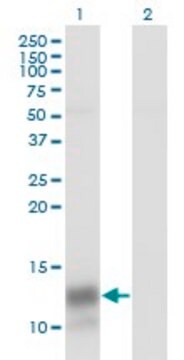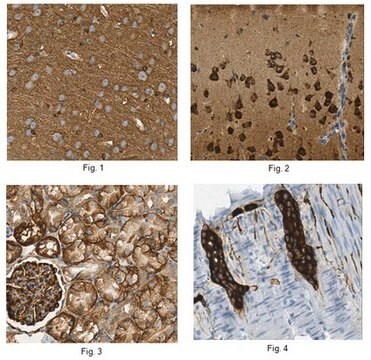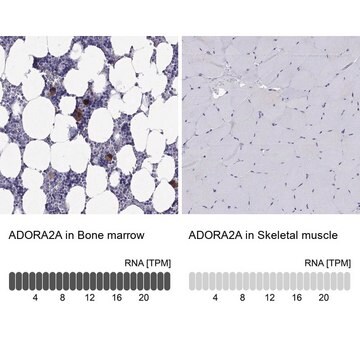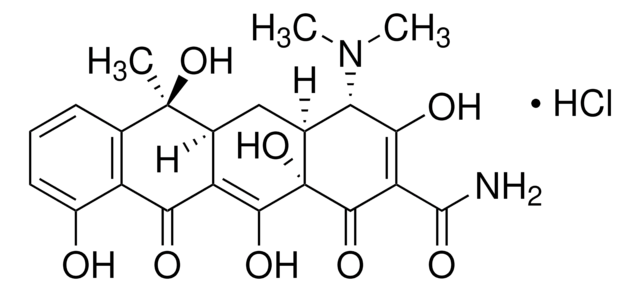MABS1255
Anti-Platelet Factor 4 Antibody, clone 197.2
clone 197.2, from mouse
Synonim(y):
Platelet factor 4, C-X-C motif chemokine 4, Iroplact, Oncostatin-A, PF-4
About This Item
Polecane produkty
pochodzenie biologiczne
mouse
Poziom jakości
forma przeciwciała
purified immunoglobulin
rodzaj przeciwciała
primary antibodies
klon
197.2, monoclonal
reaktywność gatunkowa
human
metody
ELISA: suitable
flow cytometry: suitable
immunocytochemistry: suitable
western blot: suitable
izotyp
IgG1κ
numer dostępu NCBI
numer dostępu UniProt
Warunki transportu
ambient
docelowa modyfikacja potranslacyjna
unmodified
informacje o genach
human ... PF4(5196)
Powiązane kategorie
Opis ogólny
Specyficzność
Immunogen
Zastosowanie
ELISA Analysis: A representative lot detected PF4 in the absence of heparin by ELISA. Decreased immunoreactivity of clone 197.2 was seen toward heparin-complexed PF4 (Xiao, Z., et al. (2008). Blood. 112(4):1091-1100).
Function Analysis: A representative lot and PF4, but not clone 197.2 or PF4 alone, activated human neutrophils as indicated by Mac-1 upregulation (Xiao, Z., et al. (2008). Blood. 112(4):1091-1100).
Immunocytochemistry Analysis: A representative lot, preconjugated with Alexa Fluor™ 488, immunolabeled the co-administered PF4 on human neutrophils. CD32a (Fc gamma RIIA) was seen co-localized with the PF4 anti-PF4 immune complexes on the surface of activated neutrophils (Xiao, Z., et al. (2008). Blood. 112(4):1091-1100).
Western Blotting Analysis: A representative lot detected PF4 under both reduced and non-reduced condition by recognizing a linear epitope (Xiao, Z., et al. (2008). Blood. 112(4):1091-1100).
Jakość
Flow Cytometry Analysis: 1 µg of this antibody detected PF4 in one million 4% paraformaldehyde-fixed, 0.2% Triton X-100-permeabilized human platelets.
Opis wartości docelowych
Postać fizyczna
Inne uwagi
Informacje prawne
Nie możesz znaleźć właściwego produktu?
Wypróbuj nasz Narzędzie selektora produktów.
Kod klasy składowania
12 - Non Combustible Liquids
Klasa zagrożenia wodnego (WGK)
WGK 2
Temperatura zapłonu (°F)
Not applicable
Temperatura zapłonu (°C)
Not applicable
Certyfikaty analizy (CoA)
Poszukaj Certyfikaty analizy (CoA), wpisując numer partii/serii produktów. Numery serii i partii można znaleźć na etykiecie produktu po słowach „seria” lub „partia”.
Masz już ten produkt?
Dokumenty związane z niedawno zakupionymi produktami zostały zamieszczone w Bibliotece dokumentów.
Nasz zespół naukowców ma doświadczenie we wszystkich obszarach badań, w tym w naukach przyrodniczych, materiałoznawstwie, syntezie chemicznej, chromatografii, analityce i wielu innych dziedzinach.
Skontaktuj się z zespołem ds. pomocy technicznej








